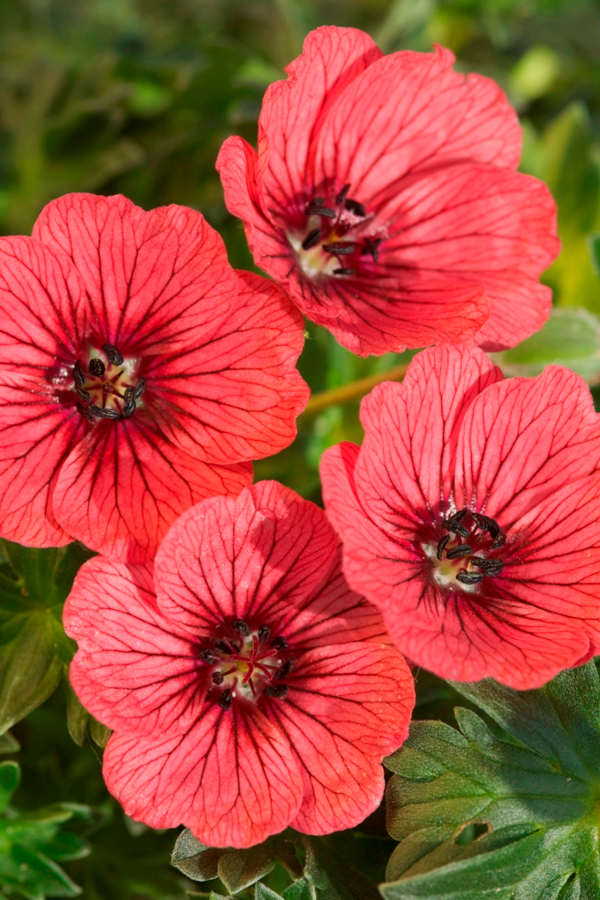How to grow Geranium
With a reliably low-fuss, long-flowering nature, it is easy to see why hardy geraniums are one of Britain’s best-loved perennials. Not to be confused with tender pelargoniums (which are also sometimes known as geraniums), these hardy plants can be annual, biennial, or perennial, and herbaceous or evergreen. They also go by the common name of cranesbill, owing to the shape of their seedpods.
Geranium is a diverse and wide-ranging genus from which a plant can be found to suit most situations. Sun or shade, moist or dry; as the esteemed garden writer Margery Fish once put it, ‘when in doubt, plant a geranium’.
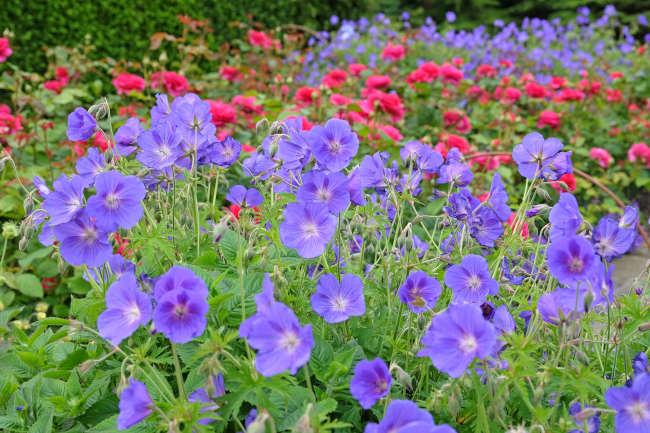
Zantedeschia is a genus of flowering plants from the family Araceae and is native to southern Africa. With a rich history dating back to the Ancient Romans, these deciduous or semi-evergreen perennials have been used as a symbol of celebration. Zantedeschia was Named after Professor Giovanni Zantedeschia, an Italian botanist.
There are two main forms of Zantedeschia: hardy and tender. Hardy forms of the plant can be grown outdoors, enjoy moist soil and full sun or partially shaded conditions - these are known as Arum lilies. Tender forms of Zantedeschia prefer being grown in containers or pots and should be brought inside over the winter - these are known as Calla lilies.
With tuberous flora in all colours from whites, yellows and oranges to deep reds and purples, Zantedeschias are not to be overlooked in any garden, as long as they have sufficient sunlight to grow in.
Ready to learn more about growing Zantedeschia? Read on for all there is to know...

Key Information
Soil pH
Position
Hardiness

Horticultural Divisions-
Species | Form | Grows best in | ||||
Clump-forming (border) | Spreading (groundcover) | Small alpine (walls, troughs) | Full sun | Partial shade | Full shade | |
G. cinereum |
|
| ü | ü |
|
|
G.clarkei |
| ü |
| ü | ü |
|
G. endressii | ü |
|
| ü | ü |
|
G. macrorrhizum |
| ü |
| ü | ü | ü |
G. maculatum | ü |
|
| ü | ü |
|
G. magnificum | ü |
|
| ü | ü |
|
G. nodosum |
| ü |
| ü | ü | ü |
G. phaeum | ü |
|
| ü | ü | ü |
G. plenum | ü |
|
| ü | ü |
|
G.pratense | ü |
|
| ü | ü |
|
G.sanguineum |
| ü |
| ü | ü |
|
G. sessiliflorum |
| ü |
| ü | ü |
|
G.sylvaticum | ü |
|
| ü | ü |
|
G. versicolor | ü |
|
| ü | ü |
|
G.wallichianum |
| ü |
| ü | ü |
|
G. x cantabrigiense |
| ü |
| ü | ü | ü |
G. x oxonianum |
| ü |
| ü | ü |
|
G. x riversleaianum |
| ü |
| ü |
|
|
G. ‘Rozanne’ | ü |
|
| ü | ü | ü |
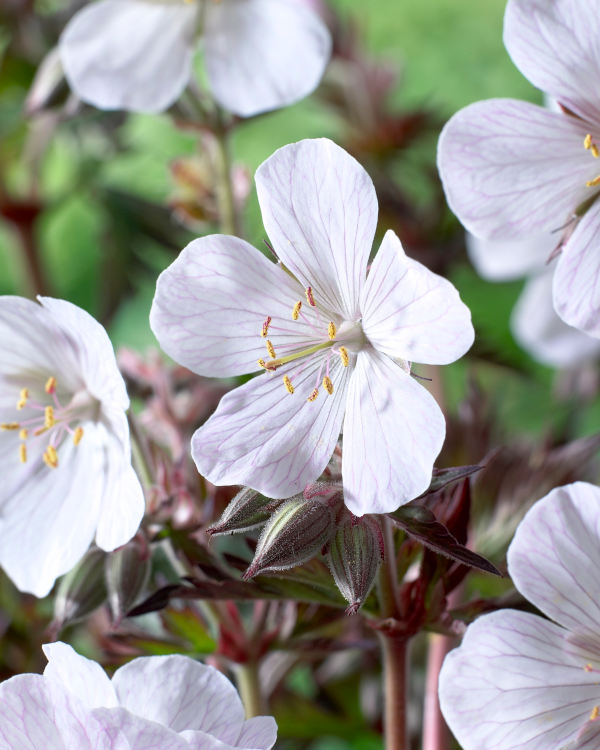
Where & when to plant Geranium
Position- Most geraniums do best in light shade, though some (often the smaller alpine species such as G. cinereum) thrive in full sun. Others, such as Geranium ‘Rozanne’ and G. macrorrhizum will grow in any light level, from full sun to deep shade.
Soil- Hardy geraniums will grow in almost any soil type, and some such as G. sylvaticum and G. macrorrhizum will even grow in very dry conditions.
Flowering Period- Can be from spring to autumn, depending on the species
Hardiness- Range from H4 (-5°C to -10°C, i.e., an average UK winter) to H7 (-20°C and beyond, i.e., very hardy), depending on the species
For best results, plant pot-grown geraniums in autumn or spring. An autumn planting can be done by those gardening in mild conditions (and broadly speaking, this is the southern half of the UK). For those liable to cold winters, it is best to wait until spring (generally the northern half of the UK). Planting can also be carried out in summer, though be prepared to water regularly.
Some hardy geraniums are available in bare root form during their dormant period. For best results, we recommend that these should be potted up as soon as they arrive, then planted out a few weeks later once they have put on some growth.
When it comes to choosing a planting spot, hardy geraniums are wonderfully undemanding and will usually have a good go at growing wherever you put them. Having said that, some are better at the extremes of full sun, deep shade, or dry soil than others, so if you are intending to plant into these more challenging conditions, it’s worth researching the right species. For your average moist, well-draining soil in part sun/ part shade, pretty much any hardy geranium will do!
Taller, clump-forming species do well in borders and among shrubs; spreading, mat-forming plants are effective as groundcover in woodland gardens or along path edges; and small, dainty species are best seen in a rock garden or wall. All should do well in a container.
How to plant Geranium
- For planting in the garden, dig the soil area removing any large stones and weeds and breaking up any lumps. If your soil is very poor, mix in some organic matter such as manure or garden compost. If it is heavy clay, now is also the time to add a generous helping of horticultural grit. Rake level and firm with your heels. Rake level again.
- Water plants well and allow to drain before planting.
- A good tip is to dig a hole twice the size of the root-ball. Fill with water and allow to drain before placing in the plant.
- Place the plant in the hole, ensuring the top of the root ball sits level with the surface of the soil. Too low and the plant may rot, too high and the roots can dry out.
- Backfill with soil and firm in gently with your foot.
- Soak well with water.
- Mulch around the base with well-rotted organic matter.
- For planting in containers, first choose an appropriately sized pot. You may wish to grow your geranium on its own in a pot just a few centimetres larger than the rootball, or as part of a larger, mixed container display. Either way, ensure there are plenty of drainage holes in the bottom.
- If you are using a large or heavy pot, it can be a good idea to fill and plant it in situ to save yourself the trouble of moving once full.
- Use a good quality potting compost with plenty of horticultural grit mixed in, and, if not already present in the compost (check the description on the bag) some slow-release fertiliser granules.
- Start by partially filling the pot with compost; enough so that when placed on it the upper surface of the root ball is about 3cm lower than the top of the pot.
- Infill all the space surrounding the root ball with compost, firming down with your fingers then adding a little more so the plant is held tight.
- Pick up the container and lightly tap on the potting bench or ground a few times to help further settle the compost around the plant.
- Soak well with water.
- A mulch with horticultural grit will look attractive and help to prevent a ‘cap’ or crust forming on the top of the compost (something container plants can suffer due to the artificial nature of their watering).
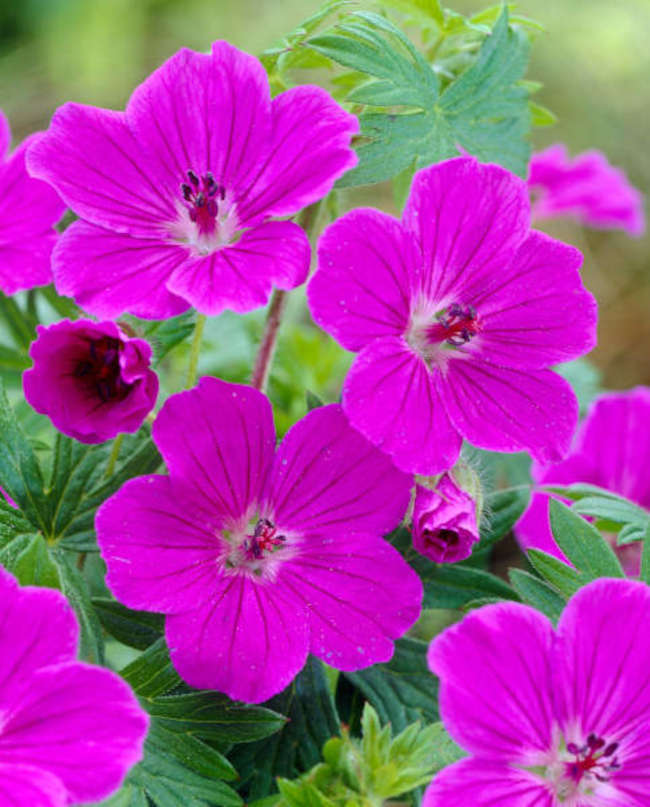
What to plant with Geranium
In a border, use the neat clumps of taller varieties to fill the spaces between a variety of plant forms, such as ornamental grasses, umbels (think achillea and sedum), and flower spikes such as digitalis or verbascum. Add some frothy, airy texture in the form of Verbena bonariensis, thalictrum, or alchemilla, and your designer border is complete!
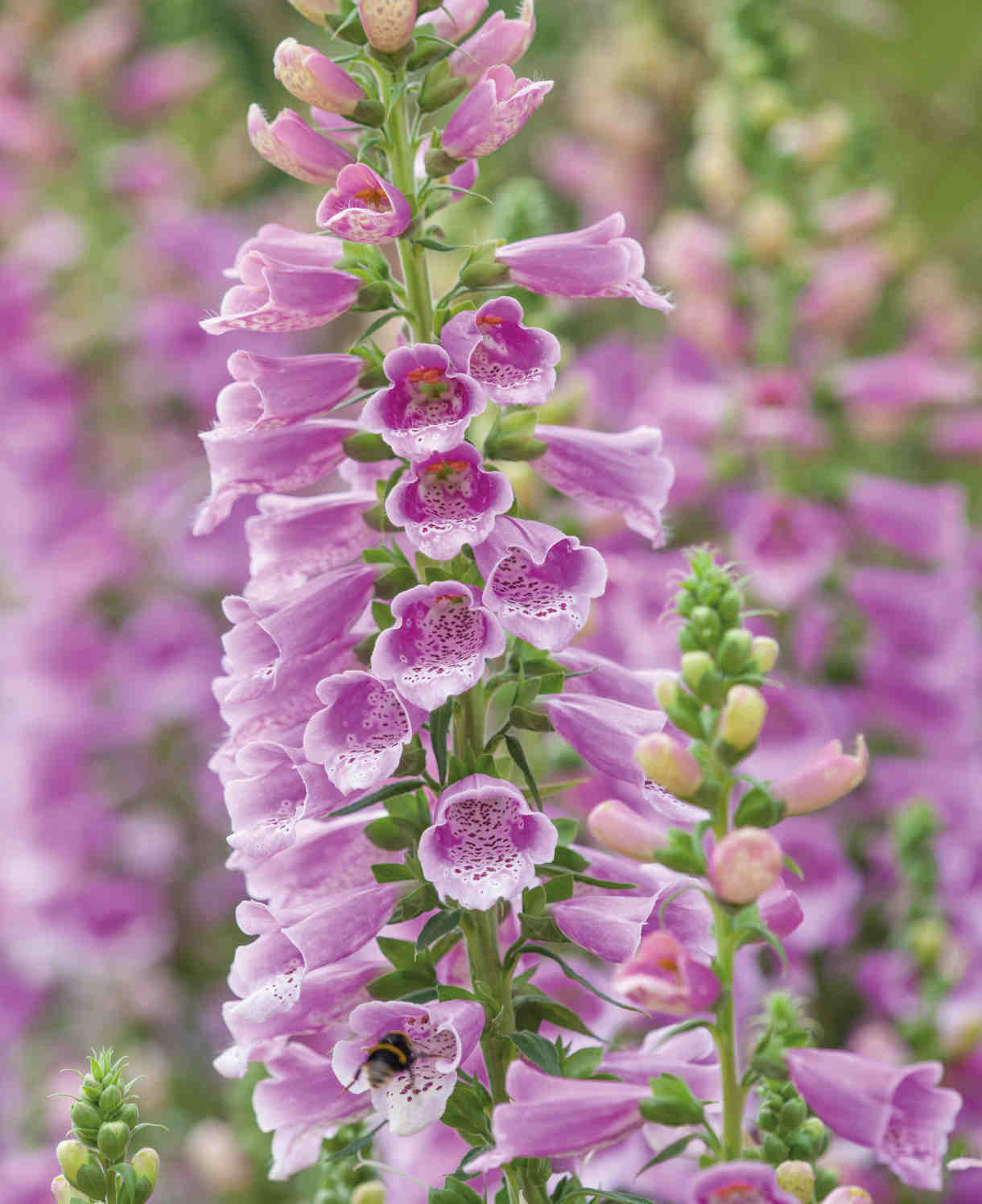
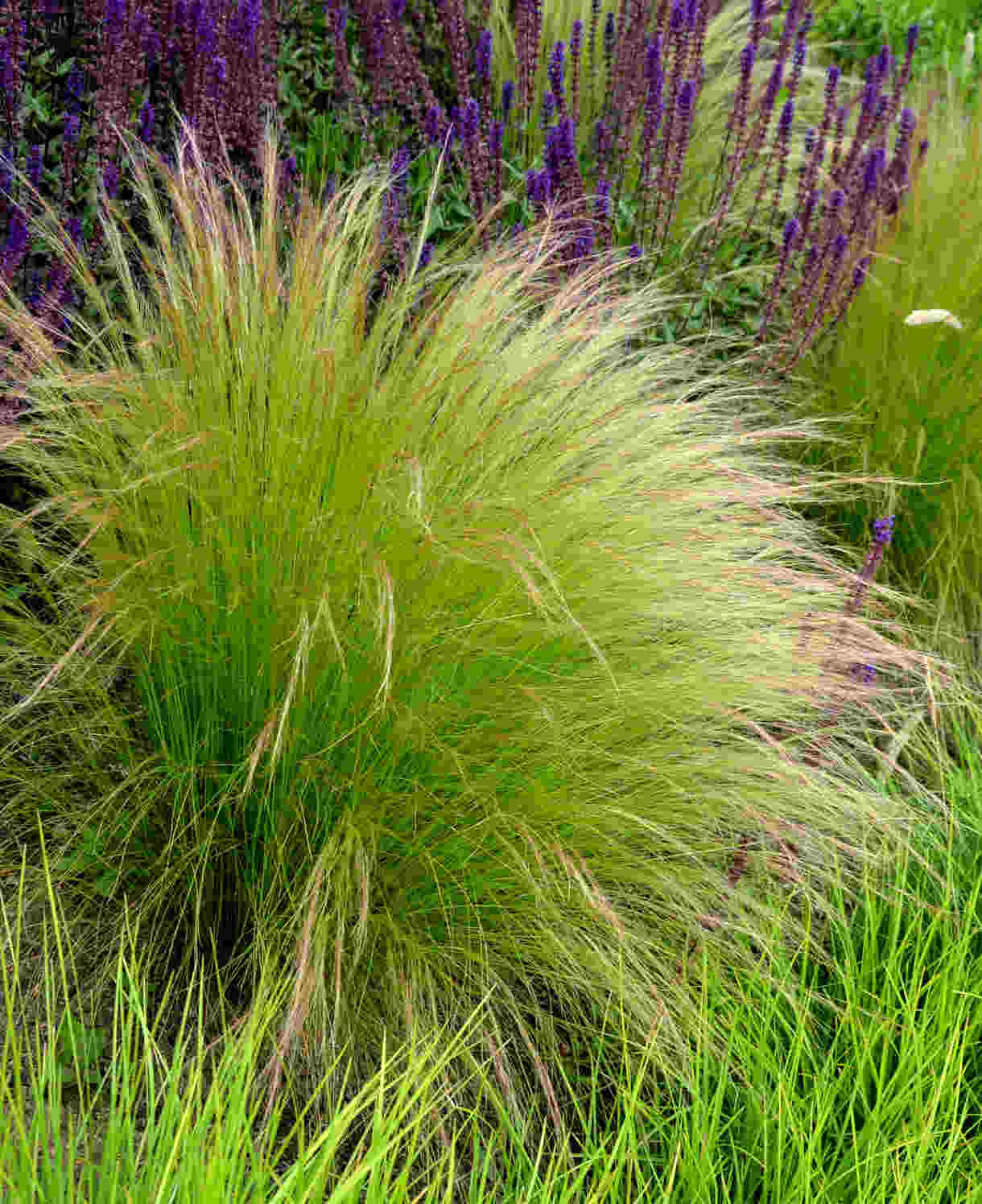

How to care for Geranium
Pruning and Deadheading
Hardy geraniums can be cut back after flowering to promote fresh new foliage and a second flush of flowers.
Most hardy geraniums are herbaceous and will die back for winter. These can be cut back if you like, though many offer good autumn colour so try to resist the urge to do this too early! Some species can be semi-evergreen in a mild winter, so it can be worth delaying the cut back until spring to see how they behave in your garden.
Watering
Hardy geraniums should be watered regularly until established. After this, they can be left to their own devices, and usually need watering only in very hot, dry spells.
Container-grown geraniums require ongoing attention. Water freely during each growing season, aiming for consistently moist but not soggy compost. Allowing the top few centimetres of compost to dry out between soakings is a good rule of thumb. Insert your finger into the compost to check this. From mid-autumn, the British climate tends to take over watering needs, though do remember to step in in the event of an unseasonably dry spell.
Feeding
On healthy, fertile soil, an annual mulch of well-rotted organic matter (i.e., a layer of manure or garden compost applied to the soil around the plant) should provide sufficient nutrients for your hardy geraniums. This has the added benefit of suppressing weeds and locking in moisture. Autumn or spring are the best times to carry out mulching.
If yours looks in need of an extra boost or you garden on poor soil, applying a general purpose granular feed to the surface of the soil and lightly working in (known as a ‘top dress’) can reap benefits. Aim to do this in spring, and then again in midsummer if needed.
Permanently container-grown plants rely more on the gardener for nutrition. Get off to a flying start by making sure you use a good quality compost, then throughout the growing season (March to September) apply a liquid feed at regular intervals according to its instructions. Alternatively, top dress with a general purpose granular feed every three months throughout the growing season.
Cold Protection
All our hardy geraniums should withstand the average UK winter without the need for additional protection. If you are growing an H4 rated geranium (such as G. ‘Midnight Ghost’, G. ‘Bloom Me Away’, or G. ‘Vision Light Pink’) and are expecting a very cold snap, it might be worth a deep, dry mulch such as bracken or straw to protect the crown.
Like all plants, those grown in containers can be more vulnerable to the cold. In the event of very low temperatures, it can be worth wrapping pots with hessian or fleece (this will protect the pot from cracking too).
Pests and Diseases
Hardy geraniums are usually fairly problem-free, though can develop powdery mildew when grown in dry conditions. Keeping on top of the annual mulching can make a big difference, as will watering during very dry spells.
In terms of pests, the usual culprits of slugs and snails may have a go when the foliage is young and fresh, but it is the geranium sawfly larvae that can really affect their appearance. Thes small, grey caterpillars can munch their way through foliage leaving little more than the veins intact, and while this rarely affects the overall health of geraniums it does look unsightly. The best course of action is to clear any debris away from plants in the winter and rake over the soil to expose the larvae to birds and frost. Check the undersides of leaves from May onwards, removing any eggs or caterpillars by hand.
How to propagate Geranium
Most hardy geraniums are prolific self-seeders, and therefore the best way to increase their presence in your garden is to simply leave them to it. For speedier results, or to have plants to use elsewhere, established clumps can be divided in spring.
- Choose a day when the soil is not frozen or waterlogged.
- Dig the plant out of the ground.
- Shake off any excess soil.
- Separate the plant into sections using either swift, cutting blows with a sharp spade, or two forks inserted back-to-back with tines touching, handles then pushed together to prise the plant apart.
- Discard old, damaged, or surplus pieces, keeping healthy, vigorous material.
- Replant decent-sized pieces where desired, and any smaller bits can be potted up.
- Water well until fully established.
* Many plants carry Plant Breeders Rights and cannot be propagated for commercial purposes.
Common Geranium Questions
How do you keep geraniums blooming?
Hardy geraniums tend to be too floriferous to deadhead individually, therefore we recommend shearing the whole plant back after flowering to encourage a second flush.
Another way to ensure a successional display of flowers is to use the ‘Chelsea chop’ approach on around half of your hardy geraniums. This involves cutting plants back by half in May just as they are about to flower, and means they will come into bloom a few weeks later than those left alone.
Do geraniums like sun or shade?
Most hardy geraniums grow best in a sunny spot with a little light shade; however, some species are known to cope particularly well with the extremes of full sun or deep shade. See our handy table above to help find the right hardy geranium for you.
How do I make my geraniums bushy?
Firstly, make sure you choose a clump-forming rather than a spreading variety.
Secondly, shearing the whole thing back after the first flush of flowers will give you a neat, compact, bushy plant for the rest of the growing season. The ‘Chelsea chop’ approach as described above is also useful in this respect, particularly for those grown along the edge of a path or wherever flopping may be an issue.
Do geraniums like to be crowded?
While they can cope with an element of jostling for space, hardy geraniums don’t enjoy being overcrowded. Once they have reached maturity after a few years, it can be worth dividing and replanting (as above in ‘How to propagate hardy geraniums’) to reinvigorate plants and ensure they have enough space to grow.
Do geraniums grow well in pots?
Yes, these plants are a good choice for pots, provided you are prepared to water and feed regularly. Divide or repot every few years to ensure continued healthy growth.
